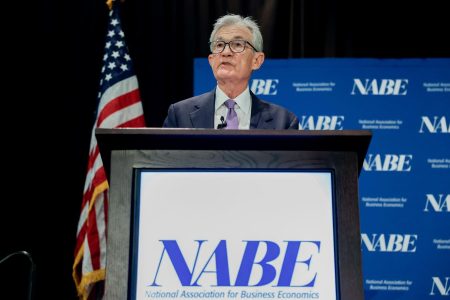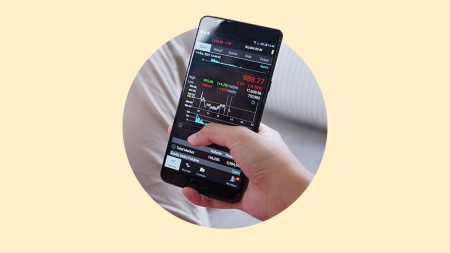If you’re looking to invest in the ongoing rise of semiconductors, then buying a semiconductor exchange-traded fund (ETF) is an easy way to get started without the work of analyzing individual companies. With a semiconductor ETF, you can buy a cross-section of the industry and not have to pick the winners, making it more accessible for non-experts. Plus, an ETF offers the benefits of diversification, reducing your risk compared to investing in individual stocks.
The semiconductor industry offers huge potential for growth. In particular, the rise of artificial intelligence (AI) is driving huge demand for chips, and semiconductor companies such as Nvidia and Broadcom have surged to become trillion-dollar companies. As AI continues to infiltrate more and more into the marketplace, semiconductor firms are selling the products that make it all possible. Of course, there’s a huge range of other daily products that have chips inside, too.
So a semiconductor ETF can be a great way to invest in what’s likely to be one of the most dynamic sectors of the economy for years, if not decades. And you can buy one of these funds inside a retirement account such as a tax-free Roth IRA and take extra advantage of its benefits.
Here are some of the best semiconductor ETFs, their performance and their cost.
Overview of the best semiconductor ETFs
|
Fund (ticker) |
3-year performance (annualized) |
5-year performance (annualized) |
|---|---|---|
|
VanEck Semiconductor ETF (SMH) |
35.9% |
29.6% |
|
Invesco PHLX Semiconductor ETF (SOXQ) |
25.4% |
N/A |
|
iShares Semiconductor ETF (SOXX) |
22.9% |
21.6% |
|
First Trust Nasdaq Semiconductor ETF (FTXL) |
18.4% |
17.4% |
|
Invesco Semiconductors ETF (PSI) |
17.9% |
18.5% |
|
SPDR S&P Semiconductor ETF (XSD) |
14.7% |
18.2% |
1. VanEck Semiconductor ETF (SMH)
This fund tracks the MVIS US Listed Semiconductor 25 Index, which has heavy concentrations in the largest semiconductor firms. Its largest positions include Nvidia, Taiwan Semiconductor Manufacturing and Broadcom, and it charges an expense ratio that’s in the middle of the pack.
- 5-year returns (annualized): 29.6 percent
- Expense ratio: 0.35 percent
2. Invesco PHLX Semiconductor ETF (SOXQ)
This fund tracks the PHLX Semiconductor Sector Index, which measures the stock performance of the 30 largest semiconductor firms traded on U.S. exchanges. The fund has a strong three-year performance record, but has not existed long enough to have a five-year record. Key positions include Nvidia, Taiwan Semiconductor Manufacturing and Broadcom. The expense ratio here is notably lower than other top semiconductor funds.
- 5-year returns (annualized): N/A
- Expense ratio: 0.19 percent
3. iShares Semiconductor ETF (SOXX)
This fund tracks the NYSE Semiconductor Index, which measures the performance of the stocks of the 30 largest semi stocks traded on the U.S. exchanges. Key positions include Advanced Micro Devices, Nvidia and Taiwan Semiconductor Manufacturing.
- 5-year returns (annualized): 21.6 percent
- Expense ratio: 0.34 percent
4. First Trust Nasdaq Semiconductor ETF (FTXL)
This fund tracks the Nasdaq US Smart Semiconductor Index, which ranks companies based on return on assets, gross income and price momentum. This fund’s largest positions include Broadcom, Nvidia and Micron Technology.
- 5-year returns (annualized): 17.4 percent
- Expense ratio: 0.60 percent
5. Invesco Semiconductors ETF (PSI)
This fund tracks the Dynamic Semiconductor Intellidex Index, which evaluates companies based on price momentum, earnings momentum, value, management actions and quality. The fund includes 30 stocks, and its largest positions include Nvidia, Broadcom and Lam Research.
- 5-year returns (annualized): 18.5 percent
- Expense ratio: 0.56 percent
6. SPDR S&P Semiconductor ETF (XSD)
This fund tracks the S&P Semiconductor Select Industry Index, and its portfolio includes 40 stocks, including its top positions of Astera Labs, Credo Technology and Advanced Micro Devices.
- 5-year returns (annualized): 18.2 percent
- Expense ratio: 0.35 percent
What to look for in an ETF
When you’re investing in ETFs, you’ll want to look at the ETF’s features to ensure that you’re buying what you want to buy. Here are three key things to analyze.
- The sub-sector: A sector ETF may have its investments focused in a specific sector, and those sub-sectors may respond differently to developments in the industry. Some industries may have a variety of sub-sectors with funds dedicated to the sub-sectors.
- The investment track record: How has the fund performed over time? Look at the annualized performance of the funds to help gauge how they might do in the future. The longer the performance period, the better view you’ll have of how the ETF may perform. Any fund can be hot in a given year, but strong returns over five or 10 years may indicate that the fund can outperform in the future, too.
- The expense ratio: The fund’s expense ratio tells you how much you’ll pay in annual fees for owning a fund, as a percent of your total investment in it.
Larger funds tend to charge lower expense ratios because they can spread the costs of the fund across more assets. Then they may try to lock in their advantage by keeping their expense ratio toward the lower end of the competition. The cheapest funds may often be the largest funds, and a low expense ratio is an important measure of what makes one of the best ETFs.
The best brokers for ETFs can help you find attractive funds with strong long-term returns.
Bottom line
If you’re looking for concentrated exposure to the semiconductor industry — one of the market’s best sectors for years — then a semiconductor ETF is a great way to get it. With an ETF, you’ll get some diversification and reduced risk by buying a wide swath of semiconductor companies — without having to do the heavy research and analysis to buy individual stocks.
Editorial Disclaimer: All investors are advised to conduct their own independent research into investment strategies before making an investment decision. In addition, investors are advised that past investment product performance is no guarantee of future price appreciation.
Why we ask for feedback
Your feedback helps us improve our content and services. It takes less than a minute to
complete.
Your responses are anonymous and will only be used for improving our website.
Help us improve our content
Read the full article here











